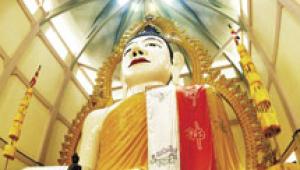Personal Touch; Do People Skills Make Me A Better Photographer?
A while back I had two big production shoots, one in India, the other in Shanghai. For both, the clients were with me all day, every day, and it was interesting that when they got around to comparing me to other stock and travel shooters they'd worked with--I'd asked them, of course, just to see how my operation stacked up to others'--they told me that what differentiated me was the way I worked with people. They talked about my ability to make genuine and quick connections with the people I photograph, which, they felt, translated into emotion, realism, and credibility in my photos.
 |
|
|
I'm not telling you this to flatter myself, although I was flattered
to hear it. The reason I'm writing about it is that they didn't
talk about my years of globetrotting experience, or my skill with equipment,
or even the preparation that went into the shoot to make it a logistical success.
What they saw and singled out were people skills, and that was especially gratifying
because making connections with the people I photograph is the very heart and
soul of who I am and what I do.
I thought right away that this was something I wanted to write about because
I read the e-mail I receive from this magazine's readers and others, many
of whom still ask about gear and technology. My point is, and always has been,
that those things don't necessarily translate to successful pictures.
Believable images are more about who you are, your character and personality,
and your ability to engage people to get the best from them.
 |
Here are some of things that work for me. None are calculated or studied;
they are simply the way I am.
First, eye contact. When I meet people I'm going to photograph, I acknowledge
them. I shake hands and look them in the eye. I'm telling them we're
going to work together and I respect them and their contribution. While I'm
photographing them I'm constantly looking at their eyes to be sure I'm
relating to them. I work with professional models and amateurs, sometimes with
people I meet along the way, and in many cases they don't speak English
and I don't speak their language, so eye contact is a way of giving them
clues and cues. You can't be afraid of intimacy or connection with your
subject, and if you can't make eye contact, you're most likely not
going to be able to get good photographs.
 |
Second, touching. I know this is something that a lot of people avoid, and it makes a lot of people uncomfortable, but appropriate touching is a way of guiding a person into position, of suggesting a pose or an attitude, and of forging a bond between the photographer and the subject. I don't wave people into position; I don't shoo them along. I'm demonstrative by nature, and after eye contact is made and after some trust is built, I'm touching to confide, to assure, and to share. It's my way of saying, I'm with you and we're doing this together. Now, I'm experienced enough and intuitive enough to know how people will react. They'll tell you right away with their reactions and signals. If I sense someone doesn't like this, I don't do it, and eye contact or gestures will be our communication. If you can't tell, if you can't read people, you may want to think about this aspect carefully.
 |
- Log in or register to post comments

















































